The Philadelphia Phillies are an American professional baseball team based in Philadelphia. They compete in Major League Baseball as a member of the National League East division. Since 2004, the team's home stadium has been Citizens Bank Park, located in the South Philadelphia Sports Complex. Founded in 1883, the Philadelphia Phillies are the oldest continuous same-name, same-city franchise in all of American professional sports.
The Phillies have won two World Series championships, eight National League pennants, and made 15 playoff appearances. As of November 6, 2022, the team has played 21,209 games, winning 10,022 games and losing 11,187.
Since the first modern World Series was played in the Phillies have played 120 consecutive seasons and 140 seasons since the team's 1883 establishment. Before the Phillies won their first World Series in 1980, the team went longer than any of the other MLB 16 teams of the first half of the 20th century without a World Series championship. Since the start of the Divisional Era in 1969, however, the Phillies have emerged as one of MLB's most successful teams, winning 11 division titles, eight National League pennants, and two World Series championships.
The franchise was founded in Philadelphia in 1883, replacing the team from Worcester, Massachusetts, in the National League. The team has played at several stadiums in the city, beginning with Recreation Park and continuing at Baker Bowl ; Shibe Park ; Veterans Stadium, and now Citizens Bank Park.
Despite their longevity and their rabid fan base, the Phillies are a team historically associated with futility, being the first American sports franchise to amass over 10,000 losses; the team holds the world record for most ever losses by a single team in all of professional sports. Over the team's history since 1883, 32 Phillies players have been awarded entry into the Baseball Hall of Fame.
The Philadelphia Phillies' Triple-A affiliate is the Lehigh Valley IronPigs, who play at Coca-Cola Park in Allentown. The Double-A affiliate is the Reading Fightin Phils, who play in Reading. The Class-A affiliates are the Jersey Shore BlueClaws, who play in Lakewood Township, New Jersey, and the Clearwater Threshers, who play at BayCare Ballpark.
The team's spring training facilities are in Clearwater, Florida.
History
Philadelphia Quakers
In 1883, sporting goods manufacturer Al Reach and attorney John Rogers won an expansion National League franchise for Philadelphia, one of what is now known as the "Classic Eight" of the National League. They were awarded a spot in the league to replace the Worcester baseball team, a franchise that had folded in 1882. The new team was nicknamed the "Quakers", and immediately compiled a.173 winning percentage, which is still the worst in franchise history. Although many sources claim that Reach and Rogers bought the Brown Stockings and moved them to Philadelphia, all available evidence suggests this is not the case. Significantly, no players from Worcester ended up with the 1883 Quakers.
In 1884, Harry Wright, the former manager of baseball's first openly professional team, the Cincinnati Red Stockings, was recruited as a manager in hopes of reversing the team's fortunes. Also in 1884, the team changed its name to the "Philadelphians", as it was common for baseball teams in that era to be named after their cities. However, as "Philadelphians" was somewhat hard to fit in newspaper headlines, some writers still continued to call them the "Quakers" while others began shortening the name to "Phillies".
In 1887, the team began to play at the newly constructed Philadelphia Base Ball Grounds, later renamed National League Park. The stadium would eventually become known as Baker Bowl. Despite a general improvement from their dismal beginnings, they never seriously contended for the title.
Becoming the Phillies
The nickname "Phillies" first appeared in The Philadelphia Inquirer on April 3, 1883, in the paper's coverage of an exhibition game by the new National League club. At some point in the 1880s, the team accepted the shorter nickname "Phillies" as an official nickname. "Quakers" continued to be used interchangeably with "Phillies" until 1890, when the team officially became known as the "Phillies". This name is one of the longest continually used nicknames in professional sports by a team in the same city.
The franchise's standout players in the era were Billy Hamilton, Sam Thompson, and Ed Delahanty, who in 1896 set the major-league record with four home runs in a single game. Due to growing disagreements about the direction of the team, Reach sold his interest to Rogers in 1899.
Philadelphia's cozy Baker Bowl proved to be a fertile hitting ground for Phillies opponents as well, and in 1930, the team surrendered 1199 runs, a major-league record still standing today. Once considered one of the finest parks in baseball, it was not well maintained from the 1910s onward. For instance, until 1925 the Phillies used a flock of sheep to trim the grass. Fans were often showered with rust whenever one of Klein's home runs hit girders. The entire right field grandstand collapsed in 1926, forcing the Phillies to move to the A's Shibe Park for 1927.
The Phillies tried to move to Shibe Park on a permanent basis as tenants of the A's. However, Baker Bowl's owner, Charles W. Murphy, at first refused to let the Phillies out of their lease. He finally relented in 1938, and only then because the city threatened to condemn the dilapidated park. Despite the move, attendance rarely topped 3,000 a game.
The lowest point came in 1941, when the Phillies finished with a 43–111 record, setting a franchise record for losses in a season. A year later, they needed an advance from the league just to go to spring training. Nugent realized he did not have enough money to operate the team in 1943, and put it up for sale.
After lumber baron William D. Cox purchased the team with a group of investors for $190,000 and a $50,000 note on March 15, 1943, the Phillies rose out of last place for the first time in five years. As a result, the fan base and attendance at home games increased. Eventually, Cox revealed that he had been betting on the Phillies, and he was banned from baseball by baseball Commissioner Kenesaw Mountain Landis on Nov. 23, 1943. The new owner, Bob Carpenter Sr., scion of the Delaware-based duPont family, bought the team with his son for an estimated $400,000 that same day – November 23, 1943. The Phillies would later claim in the 2000s that the Blue Jays moniker was never official, however news reports in 1944 note that Phillies management said that the Blue Jays name was as an official "additional nickname", meaning that the team had two official nicknames simultaneously, the Phillies and the Blue Jays.
The Phillies' official adoption of Blue Jays as a second official nickname led to a dispute with Johns Hopkins University, whose nickname is and was Blue Jays. Wilson Shaffer, then-athletic director of the Baltimore-based school, criticized the Philadelphia team for adopting his university's moniker, and said that Philadelphia should use the blue jay's Binomial nomenclature name instead and be known as the Philadelphia Cyanocitta Cristata. Similarly, the university's student council, citing the Philadelphia team's long track record of failure, passed a resolution demanding "suitable satisfaction" for what they perceived as theft and sullying of the Blue Jays name. Carpenter, Jr., responded by criticizing Johns Hopkins' baseball record and promised to make the students proud of the Blue Jays name by having his Philadelphia baseball team win many games. As part of the deal selling that team to the Johnson brothers, the Phillies bought Shibe Park, where both teams had played since 1938. Many thought that the "Whiz Kids", with a young core of talented players, would be a force in the league for years to come. However, the team finished with a 73–81 record in 1951 and finished nine and a half games out of first place in 1952, with an 87–67 record. The Phillies managed to end up in third place in 1953 with an 83–71 record, however, they would fail to break.500 from 1954 to 1957.
It became apparent that the flash and determination of the Whiz Kids would not return when the team finished last place in the National League from 1958 to 1961. Manager Eddie Sawyer abruptly quit the team after the season opener in 1960, and was replaced by Gene Mauch.
The team's competitive futility was highlighted by a record that still stands: in 1961, the Phillies lost 23 games in a row, the worst losing streak in the majors since 1900 Things started to turn around for the team in 1962 when the team finished above.500 for the first time in five years. Gene Mauch was named National League Manager of the Year that season and won it again in 1964. The team improved in 1963 when the team finished the season with an 87–75 record. There was confidence that the team would soon become contenders for a return to the World Series, though Ashburn and Roberts were gone, the 1964 Phillies still had younger pitchers Art Mahaffey, Chris Short, and rookie Ray Culp; veterans Jim Bunning and screwballer Jack Baldschun; and fan favorites Cookie Rojas, Johnny Callison, and NL Rookie of the Year Dick Allen. The team was 90–60 on September 20, good enough for a lead of 6.5 games in the pennant race with 12 games to play. However, the Phillies lost 10 games in a row and finished one game out of first, losing the pennant to the St. Louis Cardinals. The "Phold of '64" is frequently mentioned as the worst collapse in sports history.
One highlight of the 1964 season occurred on Father's Day, when Jim Bunning pitched a perfect game against the New York Mets, the first in Phillies' history.
For the rest of the decade, the team finished no higher than fourth place in the NL standings which came during the 1966 season. In the 1969 season, the Phillies finished fifth in the newly…
Eye-catching new design Philadelphia Phillies clothing will be the perfect gift for Philadelphia Phillies fans. Clothing on printed with unique and fancy designs, limited number of products.
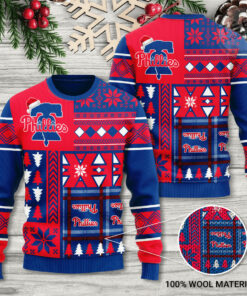
Philadelphia Phillies Sweater 3D 2022 – MLB Clothes
$48.95 – $52.95
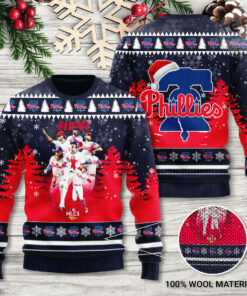
Philadelphia Phillies Christmas Sweater 3D – MLB Clothes
$48.95 – $52.95
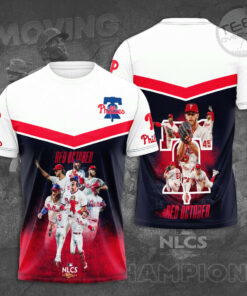
Red October Philadelphia Phillies T-shirt, Hoodie 3D – MLB Clothes
$29.95 – $45.95
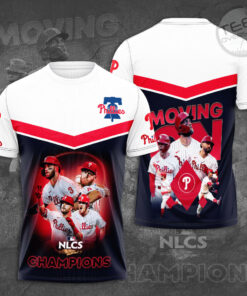
Moving On Philadelphia Phillies T-shirt, Hoodie, Sweatshirt 3D – MLB Clothes
$29.95 – $45.95
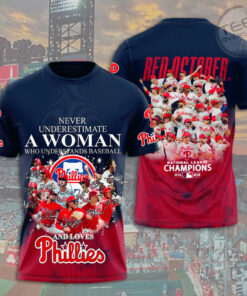
Philadelphia Phillies MLB T-shirt, Hoodie 3D – MLB Clothes
$29.95 – $45.95
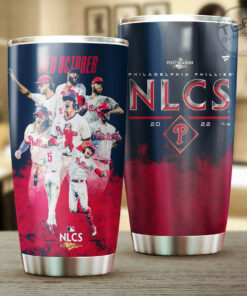
Philadelphia Phillies Tumbler Cup 3D
$35.95 $25.95
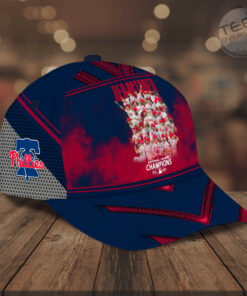
Philadelphia Phillies Cap – MLB Hat 3D
$29.95 – $29.98
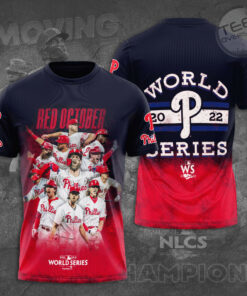
Philadelphia Phillies Red October T-shirt, Hoodie, Sweatshirt 3D – MLB Clothes
$29.95 – $45.95
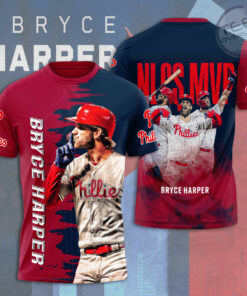
Philadelphia Phillies T-shirt, Hoodie 3D – MLB Clothes
$29.95 – $45.95
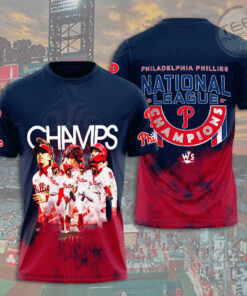
Philadelphia Phillies T-shirt, Hoodie, Sweatshirt 3D – MLB Clothes
$29.95 – $45.95
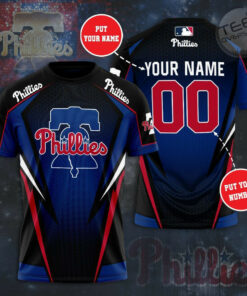
Philadelphia Phillies T-shirt – MLB Clothes
$29.95 – $29.98
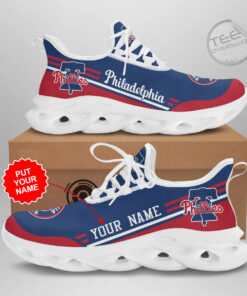
Philadelphia Phillies Sneaker – MLB shoes
$95.95 – $98.95
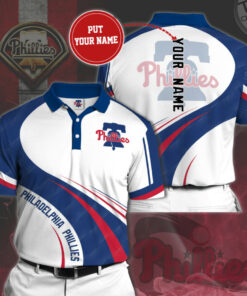
Philadelphia Phillies Polo – MLB Clothes
$41.95 – $45.95
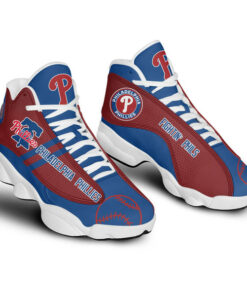
Philadelphia Phillies shoes – MLB sneakers
$95.95 – $95.98
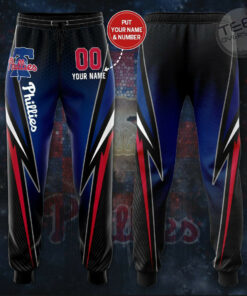
Philadelphia Phillies Sweatpant – MLB Clothes
$45.95 – $45.98
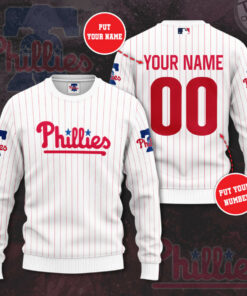
Philadelphia Phillies Sweatshirt – MLB Clothes
$40.95 – $41.95
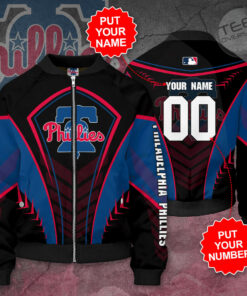
Philadelphia Phillies Bomber Jacket – MLB Clothes
$54.95 – $54.98
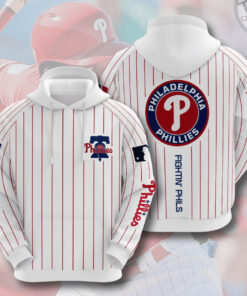
Philadelphia Phillies Hoodie – MLB Clothes
$45.95 – $45.98
The Phillies have won two World Series championships, eight National League pennants, and made 15 playoff appearances. As of November 6, 2022, the team has played 21,209 games, winning 10,022 games and losing 11,187.
Since the first modern World Series was played in the Phillies have played 120 consecutive seasons and 140 seasons since the team's 1883 establishment. Before the Phillies won their first World Series in 1980, the team went longer than any of the other MLB 16 teams of the first half of the 20th century without a World Series championship. Since the start of the Divisional Era in 1969, however, the Phillies have emerged as one of MLB's most successful teams, winning 11 division titles, eight National League pennants, and two World Series championships.
The franchise was founded in Philadelphia in 1883, replacing the team from Worcester, Massachusetts, in the National League. The team has played at several stadiums in the city, beginning with Recreation Park and continuing at Baker Bowl ; Shibe Park ; Veterans Stadium, and now Citizens Bank Park.
Despite their longevity and their rabid fan base, the Phillies are a team historically associated with futility, being the first American sports franchise to amass over 10,000 losses; the team holds the world record for most ever losses by a single team in all of professional sports. Over the team's history since 1883, 32 Phillies players have been awarded entry into the Baseball Hall of Fame.
The Philadelphia Phillies' Triple-A affiliate is the Lehigh Valley IronPigs, who play at Coca-Cola Park in Allentown. The Double-A affiliate is the Reading Fightin Phils, who play in Reading. The Class-A affiliates are the Jersey Shore BlueClaws, who play in Lakewood Township, New Jersey, and the Clearwater Threshers, who play at BayCare Ballpark.
The team's spring training facilities are in Clearwater, Florida.
History
Philadelphia Quakers
In 1883, sporting goods manufacturer Al Reach and attorney John Rogers won an expansion National League franchise for Philadelphia, one of what is now known as the "Classic Eight" of the National League. They were awarded a spot in the league to replace the Worcester baseball team, a franchise that had folded in 1882. The new team was nicknamed the "Quakers", and immediately compiled a.173 winning percentage, which is still the worst in franchise history. Although many sources claim that Reach and Rogers bought the Brown Stockings and moved them to Philadelphia, all available evidence suggests this is not the case. Significantly, no players from Worcester ended up with the 1883 Quakers.
In 1884, Harry Wright, the former manager of baseball's first openly professional team, the Cincinnati Red Stockings, was recruited as a manager in hopes of reversing the team's fortunes. Also in 1884, the team changed its name to the "Philadelphians", as it was common for baseball teams in that era to be named after their cities. However, as "Philadelphians" was somewhat hard to fit in newspaper headlines, some writers still continued to call them the "Quakers" while others began shortening the name to "Phillies".
In 1887, the team began to play at the newly constructed Philadelphia Base Ball Grounds, later renamed National League Park. The stadium would eventually become known as Baker Bowl. Despite a general improvement from their dismal beginnings, they never seriously contended for the title.
Becoming the Phillies
The nickname "Phillies" first appeared in The Philadelphia Inquirer on April 3, 1883, in the paper's coverage of an exhibition game by the new National League club. At some point in the 1880s, the team accepted the shorter nickname "Phillies" as an official nickname. "Quakers" continued to be used interchangeably with "Phillies" until 1890, when the team officially became known as the "Phillies". This name is one of the longest continually used nicknames in professional sports by a team in the same city.
The franchise's standout players in the era were Billy Hamilton, Sam Thompson, and Ed Delahanty, who in 1896 set the major-league record with four home runs in a single game. Due to growing disagreements about the direction of the team, Reach sold his interest to Rogers in 1899.
Philadelphia's cozy Baker Bowl proved to be a fertile hitting ground for Phillies opponents as well, and in 1930, the team surrendered 1199 runs, a major-league record still standing today. Once considered one of the finest parks in baseball, it was not well maintained from the 1910s onward. For instance, until 1925 the Phillies used a flock of sheep to trim the grass. Fans were often showered with rust whenever one of Klein's home runs hit girders. The entire right field grandstand collapsed in 1926, forcing the Phillies to move to the A's Shibe Park for 1927.
The Phillies tried to move to Shibe Park on a permanent basis as tenants of the A's. However, Baker Bowl's owner, Charles W. Murphy, at first refused to let the Phillies out of their lease. He finally relented in 1938, and only then because the city threatened to condemn the dilapidated park. Despite the move, attendance rarely topped 3,000 a game.
The lowest point came in 1941, when the Phillies finished with a 43–111 record, setting a franchise record for losses in a season. A year later, they needed an advance from the league just to go to spring training. Nugent realized he did not have enough money to operate the team in 1943, and put it up for sale.
After lumber baron William D. Cox purchased the team with a group of investors for $190,000 and a $50,000 note on March 15, 1943, the Phillies rose out of last place for the first time in five years. As a result, the fan base and attendance at home games increased. Eventually, Cox revealed that he had been betting on the Phillies, and he was banned from baseball by baseball Commissioner Kenesaw Mountain Landis on Nov. 23, 1943. The new owner, Bob Carpenter Sr., scion of the Delaware-based duPont family, bought the team with his son for an estimated $400,000 that same day – November 23, 1943. The Phillies would later claim in the 2000s that the Blue Jays moniker was never official, however news reports in 1944 note that Phillies management said that the Blue Jays name was as an official "additional nickname", meaning that the team had two official nicknames simultaneously, the Phillies and the Blue Jays.
The Phillies' official adoption of Blue Jays as a second official nickname led to a dispute with Johns Hopkins University, whose nickname is and was Blue Jays. Wilson Shaffer, then-athletic director of the Baltimore-based school, criticized the Philadelphia team for adopting his university's moniker, and said that Philadelphia should use the blue jay's Binomial nomenclature name instead and be known as the Philadelphia Cyanocitta Cristata. Similarly, the university's student council, citing the Philadelphia team's long track record of failure, passed a resolution demanding "suitable satisfaction" for what they perceived as theft and sullying of the Blue Jays name. Carpenter, Jr., responded by criticizing Johns Hopkins' baseball record and promised to make the students proud of the Blue Jays name by having his Philadelphia baseball team win many games. As part of the deal selling that team to the Johnson brothers, the Phillies bought Shibe Park, where both teams had played since 1938. Many thought that the "Whiz Kids", with a young core of talented players, would be a force in the league for years to come. However, the team finished with a 73–81 record in 1951 and finished nine and a half games out of first place in 1952, with an 87–67 record. The Phillies managed to end up in third place in 1953 with an 83–71 record, however, they would fail to break.500 from 1954 to 1957.
It became apparent that the flash and determination of the Whiz Kids would not return when the team finished last place in the National League from 1958 to 1961. Manager Eddie Sawyer abruptly quit the team after the season opener in 1960, and was replaced by Gene Mauch.
The team's competitive futility was highlighted by a record that still stands: in 1961, the Phillies lost 23 games in a row, the worst losing streak in the majors since 1900 Things started to turn around for the team in 1962 when the team finished above.500 for the first time in five years. Gene Mauch was named National League Manager of the Year that season and won it again in 1964. The team improved in 1963 when the team finished the season with an 87–75 record. There was confidence that the team would soon become contenders for a return to the World Series, though Ashburn and Roberts were gone, the 1964 Phillies still had younger pitchers Art Mahaffey, Chris Short, and rookie Ray Culp; veterans Jim Bunning and screwballer Jack Baldschun; and fan favorites Cookie Rojas, Johnny Callison, and NL Rookie of the Year Dick Allen. The team was 90–60 on September 20, good enough for a lead of 6.5 games in the pennant race with 12 games to play. However, the Phillies lost 10 games in a row and finished one game out of first, losing the pennant to the St. Louis Cardinals. The "Phold of '64" is frequently mentioned as the worst collapse in sports history.
One highlight of the 1964 season occurred on Father's Day, when Jim Bunning pitched a perfect game against the New York Mets, the first in Phillies' history.
For the rest of the decade, the team finished no higher than fourth place in the NL standings which came during the 1966 season. In the 1969 season, the Phillies finished fifth in the newly…
Eye-catching new design Philadelphia Phillies clothing will be the perfect gift for Philadelphia Phillies fans. Clothing on printed with unique and fancy designs, limited number of products.

Philadelphia Phillies Sweater 3D 2022 – MLB Clothes
$48.95 – $52.95

Philadelphia Phillies Christmas Sweater 3D – MLB Clothes
$48.95 – $52.95

Red October Philadelphia Phillies T-shirt, Hoodie 3D – MLB Clothes
$29.95 – $45.95

Moving On Philadelphia Phillies T-shirt, Hoodie, Sweatshirt 3D – MLB Clothes
$29.95 – $45.95

Philadelphia Phillies MLB T-shirt, Hoodie 3D – MLB Clothes
$29.95 – $45.95

Philadelphia Phillies Tumbler Cup 3D
$35.95 $25.95

Philadelphia Phillies Cap – MLB Hat 3D
$29.95 – $29.98

Philadelphia Phillies Red October T-shirt, Hoodie, Sweatshirt 3D – MLB Clothes
$29.95 – $45.95

Philadelphia Phillies T-shirt, Hoodie 3D – MLB Clothes
$29.95 – $45.95

Philadelphia Phillies T-shirt, Hoodie, Sweatshirt 3D – MLB Clothes
$29.95 – $45.95

Philadelphia Phillies T-shirt – MLB Clothes
$29.95 – $29.98

Philadelphia Phillies Sneaker – MLB shoes
$95.95 – $98.95

Philadelphia Phillies Polo – MLB Clothes
$41.95 – $45.95

Philadelphia Phillies shoes – MLB sneakers
$95.95 – $95.98

Philadelphia Phillies Sweatpant – MLB Clothes
$45.95 – $45.98

Philadelphia Phillies Sweatshirt – MLB Clothes
$40.95 – $41.95

Philadelphia Phillies Bomber Jacket – MLB Clothes
$54.95 – $54.98

Philadelphia Phillies Hoodie – MLB Clothes
$45.95 – $45.98
Comments
Post a Comment